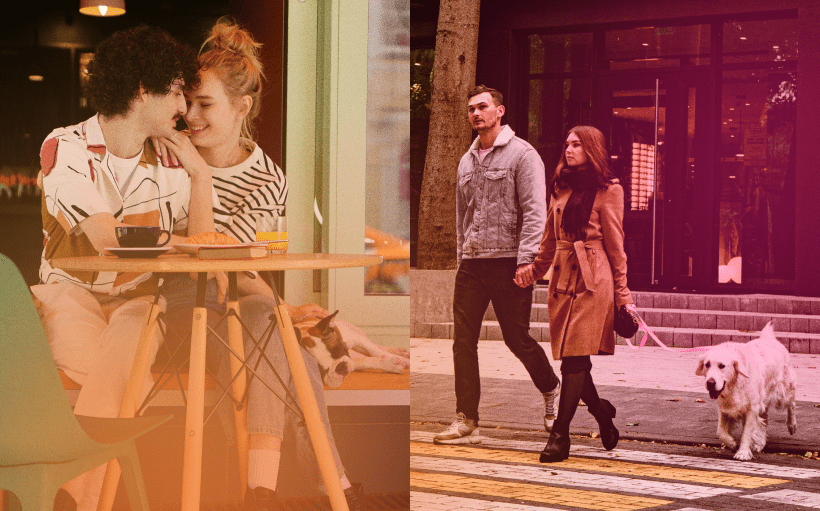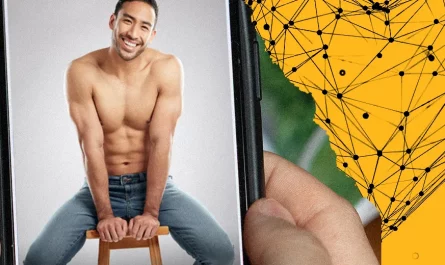Class differences permeate even the maximum private components of life, which include courting and courtship conventions. A man or woman’s socioeconomic fame can profoundly form their values, relationship rituals, and desires for romance. Members of the higher elegance tend to prioritize status, wealth, and family pedigree whilst looking for companions. The middle elegance locations greater emphasis on stability, comfort, and shared interests. The operating class values shared studies, personalities, and values over social popularity or wealth. Dating is famous for how social class molds our most intimate relationships, from how we select companions to our imaginative and prescient of an ideal relationship. Class shapes our desires, customs, and dreams around romance and courtship in diffused yet significant approaches.
How Personal Values and Motivations Vary by Class
Personal Values and Motivations
One key way courting and courtship fluctuate throughout social instructions is in the personal values and motivations that drive people’s relationship behaviors. For instance, in wealthier or greater elite social circles, schooling level and highbrow pastimes tend to be fairly valued. Dating partners are frequently decided on based on commonalities in prestigious instructional backgrounds, expert ambition, and intellectual pastimes.
Emily, a 28-12 months-antique attorney, reflects on her dating priorities: “I continually swipe left on dating app profiles that do not list as a minimum a bachelor’s degree, let alone something similar. I’m looking for a person I can have interaction with on an intellectual level approximately political affairs, literature, and so forth.”
In contrast, for the ones in decreased socioeconomic brackets, elements like economic stability, bodily attractiveness, and personal health generally tend to take priority over educational pedigree while evaluating capacity partners. The pressures and realities of running-elegance lifestyles can make greater sensible concerns like constant employment and dependability loom larger.
James, a 32-year-old electrician stocks, “I tend to head for girls who have an awesome head on their shoulders and might maintain down a task reliably. Physical appeal and having matters in common are manner larger factors for me than whether she became the pinnacle of her magnificence at some prestigious university.”
Courtship Rituals and Customs
Traditional courtship rituals and customs additionally regularly look pretty one of a kind relying on social elegance. Among the upper crust, there can be extra emphasis positioned on enormously formal relationship activities like charity galas, opera performances, or posh dinners in upscale venues.
Sarah, a forty five-yr-old investment banker, recounts, “Our typical date night entails getting dressed to the nines, taking a vehicle service to the city’s trendiest new Michelin-starred restaurant, having a multi-path meal with expert wine pairings, and possibly capping it off at the ballet or an elegant membership’s VIP section.”
But for middle and lower-class daters, extra casual hangouts, like going to the films, grabbing fast meals, or just “chilling” at home or within the neighborhood park can be the norm. Rules around things like chaperones, parental approval, and physical intimacy can shift substantially between the training too.
Dan, a 24-year-old barista reflects, “Most of my dates tend to be pretty relaxed – grabbing a burger and fries somewhere low-cost and then perhaps going for a walk inside the park. We’re no longer trying to impress every one, just seeing if we vibe collectively.”
Ever wonder why debutante balls are largely constrained to society’s elite circles in recent times? Classed-based total traditions in dating and courtship remain entrenched in many cases.
Relationship Goals and Trajectories
Relationship dreams and trajectories demonstrate a number of the starkest magnificence-based total disparities in the cutting-edge courting global. Those of better socioeconomic fame generally tend to prioritize locating a wonderfully like-minded lifelong companion with maximal assets. They’re willing to take longer vetting capability spouses, dragging out courtship over years in pursuit of the ideal soulmate.
Emma, a 30-year-vintage tech govt, stocks her method: “I’ve dated guys for as long as 3 years at a time trying to determine if we are a great healthy. I might not accept something much less than my absolute dream associate – it wishes to be a highbrow, economic, and romantic grand slam. I’m in no rush.”
In assessment, those with decreased lessons regularly look to discover a dependable and strong accomplice to doubtlessly start their own family with sooner in place of later. Financial strain and existing circumstances might also make protracted courtship less realistic. Marriage is embraced more as a realistic partnership than a pairing of soul friends.
Mark, a 27-year-old retail worker, describes his attitude: “I’d like to discover someone moderately quickly I can settle down and begin a family with. Someone who’s going to be an awesome associate and parent. I do not have the luxury of taking five years so far around and examining each capability flaw – I’ve got to fasten it down as soon as I find a person dependable and strong.”

The Subculture of Dating Apps
Of direction, we would be remiss not to touch on the increasing number of the influential realm of online relationship and relationship apps. In many approaches, those technologies have upended a few conventional relationship norms. But in different ways, elegance divisions seem to persist even in this contemporary digital aircraft.
Dating apps favored by the better lessons, like The League, promote themselves as curated groups for educated professionals looking for dating-minded partners. App users can suggest their preferred relationship radius, filtering out less properly-heeled neighborhoods. Education-level verification is closely promoted.
Alexa, a 34-year-old-antique management representative, explains her reason: “The League allows me to filter out for human beings in my identical social strata – fellow Ivy Leaguers running in prestigious fields. I set my radius to the handiest consisting of zip codes within the most applicable suburbs. I don’t have any interest in wasting time courting outdoor my social circle.”
Meanwhile, extra open and free dating apps like Tinder are embraced across the socioeconomic spectrum. But elegance divides frequently stay, with wealthier daters clustering within sure city regions and decrease-income customers focused someplace else. App reports and priorities can shift between these agencies.
Tom, a 29-year-old barback, remarks on his Tinder use: “I generally tend to stick to my side of the metropolis on the app, and the people I healthy with do too. I’m not strolling into any bougie kinds from the tonier neighborhoods – simply operating stiffs like myself looking for a laugh and perhaps a regular thing.”
Modern Complications and Gray Areas
While extensive socioeconomic styles hold actual in many ways, the tale is not reduced and dry. Gentrification, social mobility, interracial relationships, and greater can muddy the waters and create a blurring of class lines.
Olivia, 26, who works as a photo dressmaker creating stable center-magnificence earnings whilst dwelling in a traditionally blue-collar neighborhood displays: “My dating reviews are sincerely quite mixed in phrases of sophistication. My current boyfriend grew up in a top-center-elegance suburb and our courtship has been quite formal and extended. But I’ve additionally dated men from terrific running-magnificence backgrounds whose processes have been extra casual. I kind of exist in among worlds in that experience.”
Sasha, a 32-year-old legal professional who grew up in poverty but is now a hit, shares her nuanced angle: “I discover myself code-switching a lot in terms of a relationship. In social settings with colleagues from similar privileged backgrounds as me now, I reflect the refined dating customs of the elite. But when I’m with family or pals from my old neighborhood, it is a total shift back to much extra casual, down-to-earth courtship. I exist in both universes.”
Conclusion
At the end of the day, the search for love and human connection is customary across all degrees of social magnificence. But the approaches we date, court ability companions, and technique critical relationships can shift considerably primarily based on monetary and cultural factors.
From motivations to rituals to relationship trajectories to even the apps we use to find romantic partners in the current age – elegance performs a bigger role than many could expect. The intersections of class, dating, and courtship make for a complex and ever-evolving panorama to navigate in our increasingly more stratified international.
As society keeps to conform, it is going to be fascinating to see how social lessons impact courting and courtship going ahead. New generations, transferring demographics and cultural norms will keep reshaping these dynamics. One component is sure – as long as social lessons persist, we will anticipate the differences in courting processes to adapt in parallel.
FAQs
Q1: Do humans of better social instruction tend to stay single longer before marrying?
A1: Yes, studies show human beings of better socioeconomic popularity generally tend to marry at an older a while on average. They regularly want to establish their careers and financial stability first earlier before thinking about marriage. The common age for a primary marriage is around 30 for people with bachelor’s or superior ranges, as compared to the mid-20s for people with less formal schooling.
Q2: Do lower-income people care much less approximately their companions’ education stages?
A2: It’s no longer that education is unimportant, but in lower income groups, sensible elements like constant employment and character traits tend to be prioritized over instructional pedigree whilst comparing capability companions. There is much less of a snobbish fixation on elite university brand names or superior degrees.
Q3: Do magnificence differences in courting disappear while human beings use online courting apps?
A3: Not completely. While dating apps have changed the landscape and theoretically deliver customers’ admission dates out of doors to their common social circles, class divides nonetheless emerge – with users clustering extra domestically based on socioeconomic fame even on identical apps. Filtering gear and possibilities around location, training degree, and so forth. Can similarly perpetuate stratification.
Q4: Do arranged marriages occur extra frequently in certain social training?
A4: Yes, arranged marriages initiated by using dad and mom are a good deal greater not unusual among positive ethnic corporations and social instructions, mainly amongst immigrant groups and the socioeconomic elite. Upper-crust families have lengthy practiced “match-making” to preserve fortunes, own family legacies, and class popularity. Arranged marriage remains exceedingly general in positive cultures no matter the vicinity.
Q5: Are lower earnings relationships more volatile or much more likely to result in divorce?
A5: Not always. While studies do show barely better divorce quotes amongst lower-profits agencies, the differences are surely exceptionally modest in recent times in comparison to the past. With modern societal shifts closer to greater innovative perspectives on relationships, elegance disparities in divorce costs have notably faded over recent a long time compared to the twentieth century. Economic and academic divides persist, but unhappy companions of all classes now feel more empowered to go away from unfulfilling marriages.



